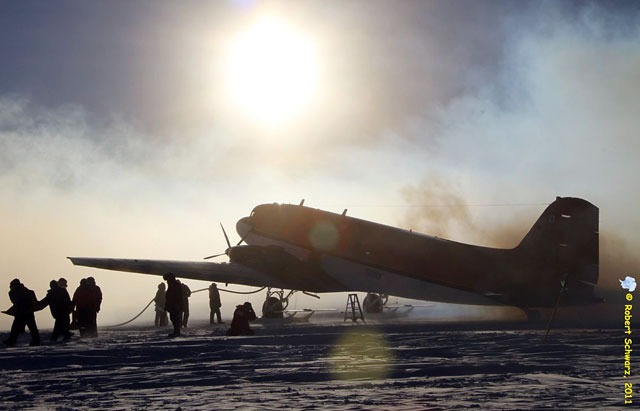New arrivalsBasler aircraft land at Pole, first planes since FebruaryPosted October 21, 2011
Two Basler BT-67 aircraft landed at the U.S. Antarctic Program's Poor weather at one location or another over the past week delayed the arrival of the first 16 members of the South Pole summer crew, who are waiting at McMurdo. The station will house up to 250 people during the summer field season, which runs through mid-February. The New York Air National Guard This year promises to be especially busy as hundreds of visitors are expected to fly, ski and even drive to the South Pole to commemorate the 100th anniversary of the famous Race to the South Pole between Norwegian Roald Amundsen and Briton Robert Falcon Scott. The two men, along with their teams, became the first people to stand at the geographic South Pole. Amundsen reached 90 degrees south latitude on Dec. 14. Scott arrived about a month later on Jan. 17, and perished with four other men on the return journey. Research at the South Pole Station focuses on atmospheric science and astrophysics. Two of the largest experiments include the South Pole Telescope |



For USAP Participants |
For The Public |
For Researchers and EducatorsContact UsNational Science FoundationOffice of Polar Programs Geosciences Directorate 2415 Eisenhower Avenue, Suite W7100 Alexandria, VA 22314 Sign up for the NSF Office of Polar Programs newsletter and events. Feedback Form |



